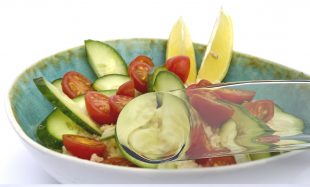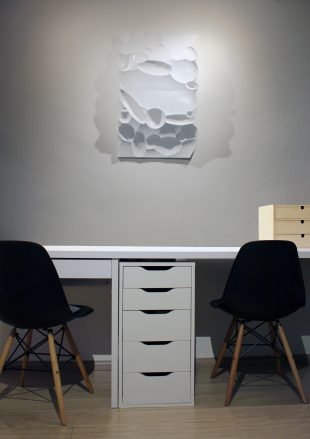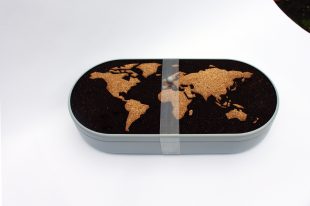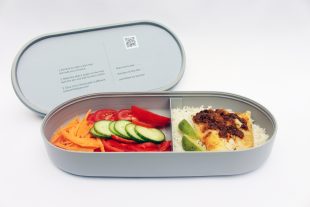By Carola Breuer
Overview
Starting point
The eating context in high-class restaurants is already thoroughly designed to enable blissful eating experiences. However, these experiences are only available to a few people while the majority cannot afford them. Contrary, the home eating context is mostly neglected by design but offers many touch points to design for. At home, savouring of food is often diminished by executing tasks in parallel or watching TV. From the described context, the design goal of assisting people in savouring their home eating experience to enable blissful experiences was derived.
Positive Design Approach
To create designs that contribute to savouring the home eating experience, the positive design approach was applied during this project. Building on the sustainable happiness model, the approach offers different happiness enhancing strategies whereof one is replaying and savouring life’s joys. Savouring which is very important for the eating experience, in turn, can be reached through different strategies, whereof sharing with others, sharpening sensory-perception and memory building were identified as the most relevant ones for the eating context.
Analysis
In literature, the five senses (taste, smell, sight, sound and touch) as well as the following 11 factors were identified as contributing to pleasurable eating: atmosphere, social aspects, personalization, storytelling, healthiness, surprise, mood, hunger, preparatory activities, behaviour during and after the experience and remembrance.
Qualitative study
In the following qualitative study including an online survey, a focus group, interviews and a diary study blissful eating experiences, as well as food products, objects and customs related to blissful eating, were collected. In total, the study confirmed that the same mentioned factors relevant for pleasurable eating were also relevant for the culminating experience of bliss. It also showed that the majority of reported experiences took place in the home context contrary to literature, which focuses on high-class restaurants. According to the findings, the factors and senses were regrouped into the following stimuli, organism and response variables:
• Way of eating, Explanation, Taste, Healthiness, Smell, Preparation, Sound, Feel, Atmosphere, Look, Social aspects, Newness, Surprise
• Mood and Hunger
• Anticipation, Being in the moment, Reminiscing
Card set
The results of the analysis were translated into a card set that visualizes blissful eating experiences, food products, objects and customs and can be used for ideation. The card set contains 13 cards explaining the different stimuli variables as well as 60 cards with food products, objects, customs and eating experiences illustrating the context-specific factors leading to bliss in eating.
Design goal
From the results of the literature research and the qualitative study, the following design goal was derived: I would like people to have a blissful experience by assisting them in savouring their home eating experience.
Important savouring strategies:
• sharing with others
• sharpening sensory perception
• memory building
Ideation and conceptualization
Using the card set three concepts assisting people in savouring their home eating experience were developed: the mindful spoon, the sharing plate and the travelling tin.
The mindful spoon


The concept targets people eating alone. It is a spoon-shaped and held in a special way to draw attention to the usually automated process of eating. The integrated lens magnifies food. Seeing details that are otherwise only known from macro photography brings magic into eating. This can help to rediscover a positive relationship with food and draws a closer look at what exactly is on the plate and its quality.
Sharing plate


The second concept focuses on couples eating together. It is a uniquely shaped plate that inspires people to serve their food in a creative way that promotes sharing and eating from the same plate. Additionally, it connects the couple in a physical way and requires collaboration. This encourages teamwork and conversations that support the relationship in day-to-day life.
Travelling tin


The travelling tin is for sharing with others. It is a box that can be filled with homemade food and passed on to a person with a different cultural background. The origin of the food can be shown on a map. The marks make the journey of the box visible over time and encourage passing it on to someone new. Additionally, information about the food can be added online through a QR code. This connects people with different cultural backgrounds and encourages random acts of kindness.



